
Marketing and product analytics: Why use a flashlight when you can turn on the lights?
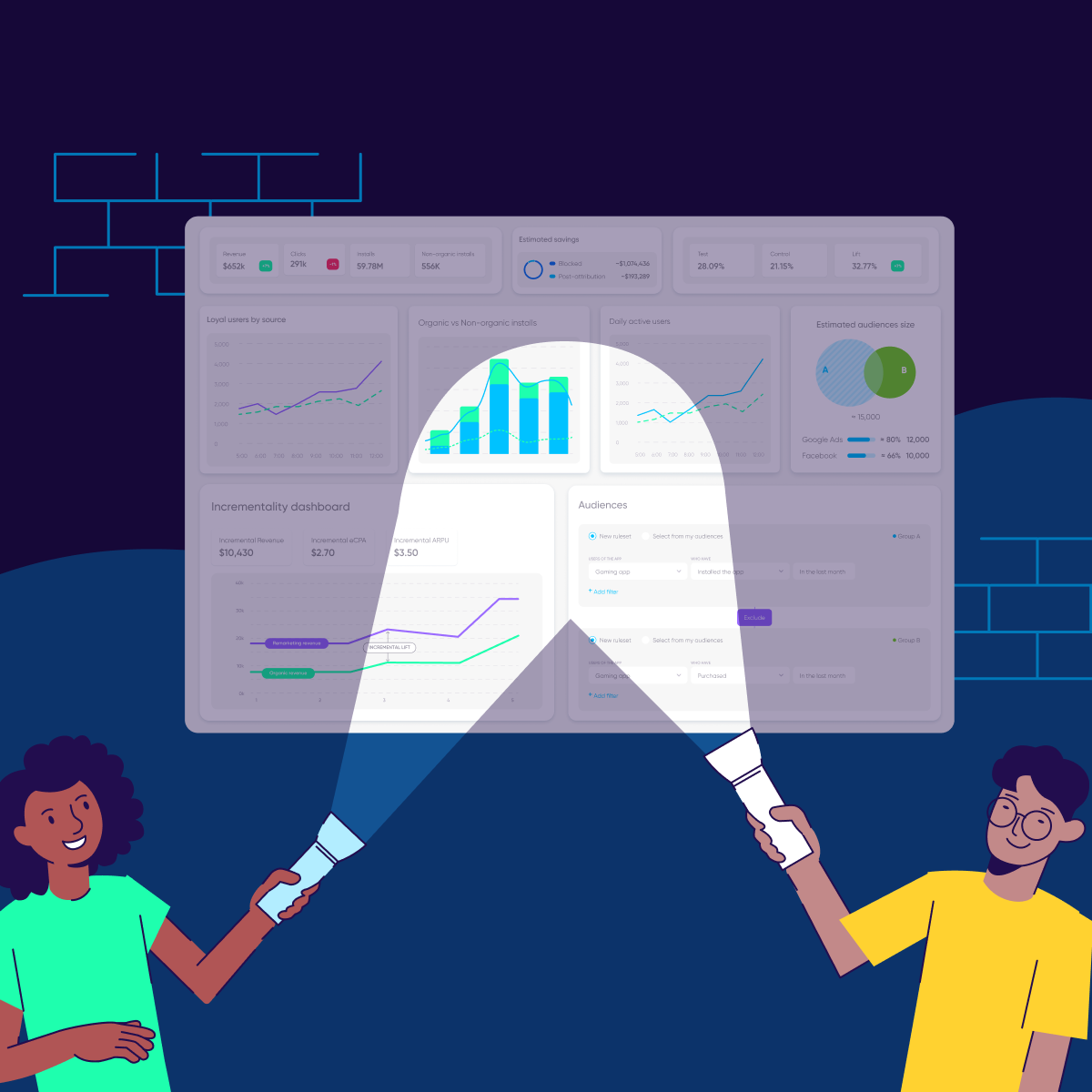
Whether you are a user acquisition manager responsible for optimizing the efficiency of your mobile campaigns, or a mobile product manager looking to keep your customers engaged, there is one thing that matters more than anything else: clear, reliable customer insights.
The journey toward digital transformation, which many companies are currently undergoing, requires marketing and product teams to work closely together to achieve the overarching company goals of growing the mobile app customer base, keeping customers engaged over time, and increasing loyalty to drive the highest lifetime value.
While there may be shared goals for marketers and product managers, there are also a number of challenges that have historically kept them from being able to easily work together to achieve them.
The data from which these teams draw to make informed decisions has often been siloed in distinct platforms, making it difficult to get the complete picture needed to work effectively together.
In order to overcome this limitation, and shine a light on every part of your customer journeys and user experience, you need to fully integrate your data and insights.
When marketing and product teams can see the full picture, they can make the right choices and implement product and marketing innovation that matters to users and results in significant business growth.
Product analytics and marketing analytics combined
Marketing analytics and product analytics platforms are both valuable on their own because they shine a light on a specific set of data and insights. But when you bring them together you go from using a flashlight to illuminate one part of a room to “turning on the lights”.
By combining marketing and product analytics, marketers and product managers get rich behavioral data that helps reach their next wave of users, create real digital product innovation, and provide personalized experiences.
Getting started with user acquisition for apps
Tips on how to get it right:
1. Turn on the lights
Right now, you may only have partial visibility into your customer journey. Disconnected data and missing information create blind spots that put you at risk of losing your customers along the way. Gaining full visibility into the customer journey – from acquisition, through engagement, to retention – is key to building a powerful digital product and a marketing strategy that delivers real value to your customers.
Marketing attribution data provides a complete view of your customers even before they reach your app. It starts with:
- Gaining insights into the entire conversion path: Knowing which channel the user came from and how they were reached can provide important, early clues about the user personas engaging with your app.
- Understanding what messaging they reacted to can serve as an indicator of what they expect to see first within your app
- Identifying in what order they interacted with your marketing campaigns can help you understand which channels and strategies may be integral to generating interest in your app.
- Understanding which channels, campaigns, ad sets, and even creative variations produce the users that are most valuable for your app (often based on LTV and ROAS metrics).
Even if a specific channel by itself appears to do little in terms of install performance, it may serve as a cornerstone for initial awareness that the success of subsequent performance campaigns depends on.
Once customers arrive in the app, in-app events analysis provides visibility into their engagement level and LTV. When you combine this marketing analytics data with product analytics, you can really understand how your customers experience your digital products (e.g. the features that attract them most, their last five purchases, a prediction of their next ten, etc.)
Analyzing the behavior of users based on event data, including users that were not introduced to your product via a marketing campaign, is essential for reaching, engaging, and retaining customers.
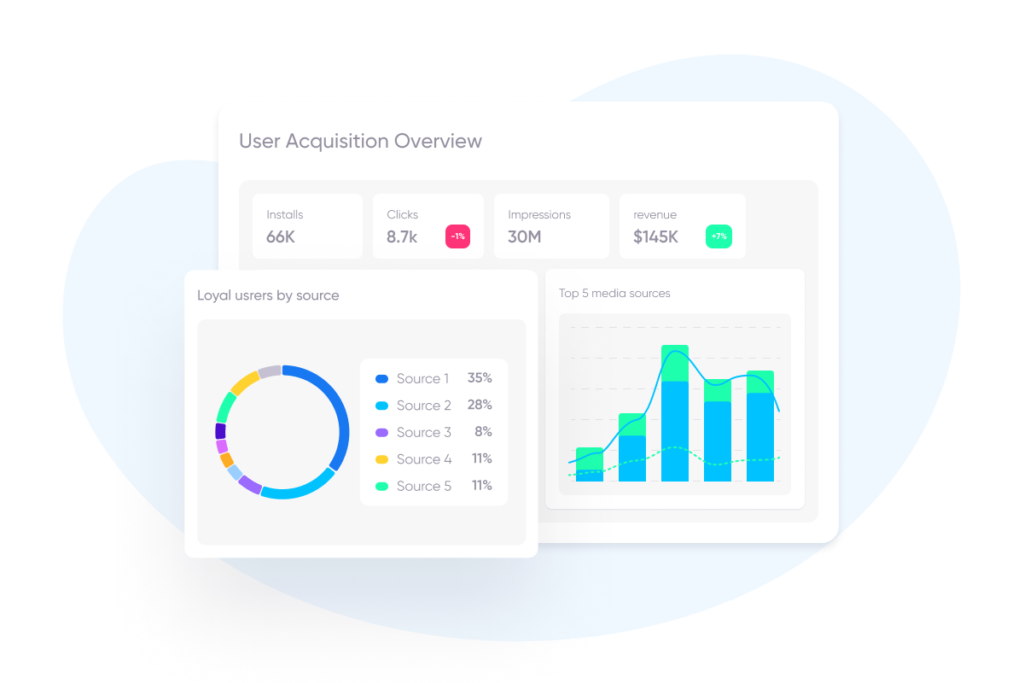
2. Put yourself in your users’ shoes
Think about how you would like a brand to interact with you as a consumer, and what a brilliant user experience would look like. This will often require product managers and growth marketers to create unique journeys tailored for different personas based on attribution data and then use the right engagement tools to boost conversions.
Take for example an onboarding experience: this is one of your brand’s few opportunities to deliver a great first impression and turn a potential user into a loyal customer.
Directing customers to the generic login screen instead of the relevant in-app content can lead to a poor user experience and a broken journey, causing them to abandon the onboarding process.
When customers click on a URL link that takes them directly to the specific app page of a corresponding offer (let’s say a new video streaming subscription that promotes exclusive original content in their ads), it is far more likely they will complete the process than if they arrive at the app home page and are forced to search for the specific content/offer they were interested in. Brands that implement OneLink deep links in their campaigns prove this point. They are able to deliver on the promise of seamless, tailored experiences, increasing activation rates by 2-5 times.
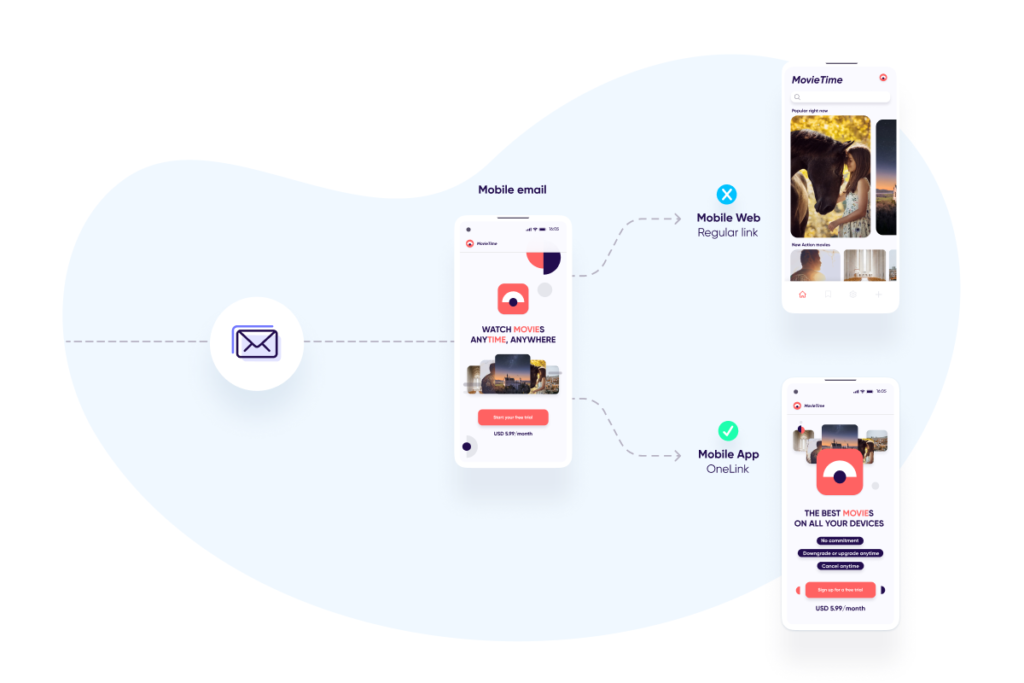
3. Know your weak links
Dealing with customer churn and recognizing where in the process you start losing potential users is important for your mobile app growth. As in every human connection, you can save the relationship if you address the issues in time before it’s too late.
As a product manager or a growth manager you need to stay on top of attribution data: know where your uninstall events are coming from, recognize where users are dropping, and measure the KPIs that matter most.
Measuring the end-to-end engagement rate of significant in-app events that are relevant to your app category is critical to optimizing the user experience, growing engagement with new features, and retaining users over time.
Sometimes, even a small tweak in your messaging that seems to be minor can completely change the way consumers interact with a feature.
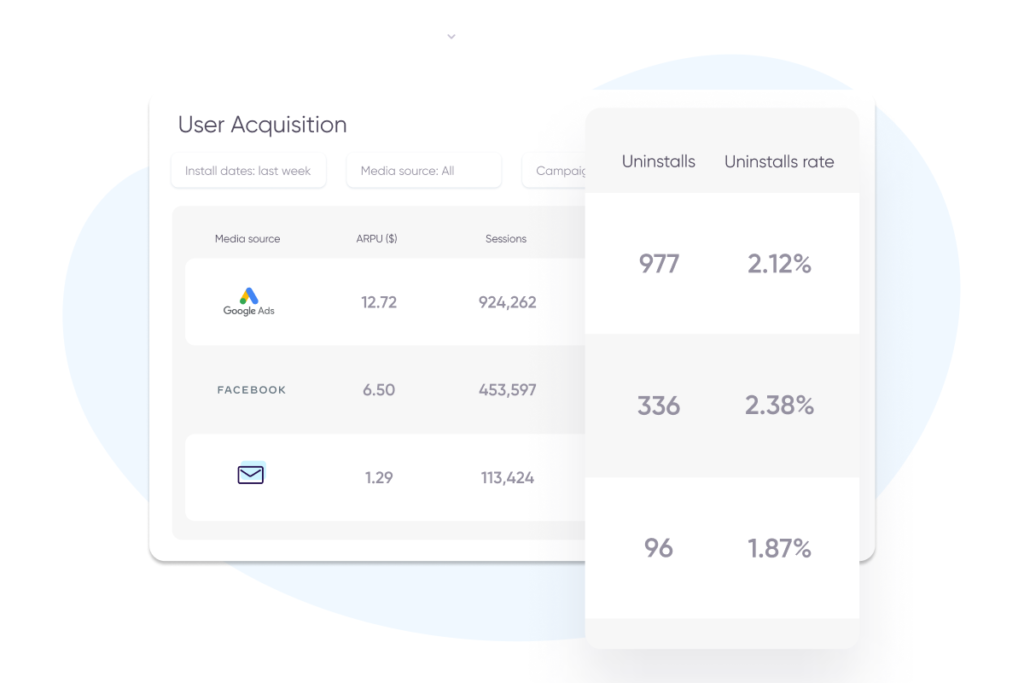
4. Don’t let fraud harm your budget or in-app experience
In H1 2020, $1.6 billion of ad spend was exposed to app install fraud. While this number is troubling to marketers, it should be equally troubling to product managers.
While it may be fairly obvious that fraudulent installs will deeply affect the bottom line of marketing budgets, it may be less obvious that it can also affect product development strategy.
For example, high drop-off rates shortly after install may lead you to doubt your onboarding experience and raise questions around how to stop early funnel churn. But if this churn is mainly caused by sophisticated bot traffic, you may be working to solve a problem that doesn’t actually exist.
In other words, if product managers are optimizing their apps for fake users the experience of real customers is bound to suffer.
Cleaning out fraud from polluted marketing performance data allows both marketers and product managers to optimize future data usage and focus on true installs and in-app events coming from valid channels.
Fraud Protection solutions, like Protect360, keep advertisers safe from threats of mobile ad fraud at every stage of the conversion. They also give you the ability to run your marketing campaigns across a diverse ecosystem of ad networks while being protected from fraud (including new media channels that you’d like to test before you add them to your marketing mix) which can ultimately save hundreds of thousands of dollars each year.
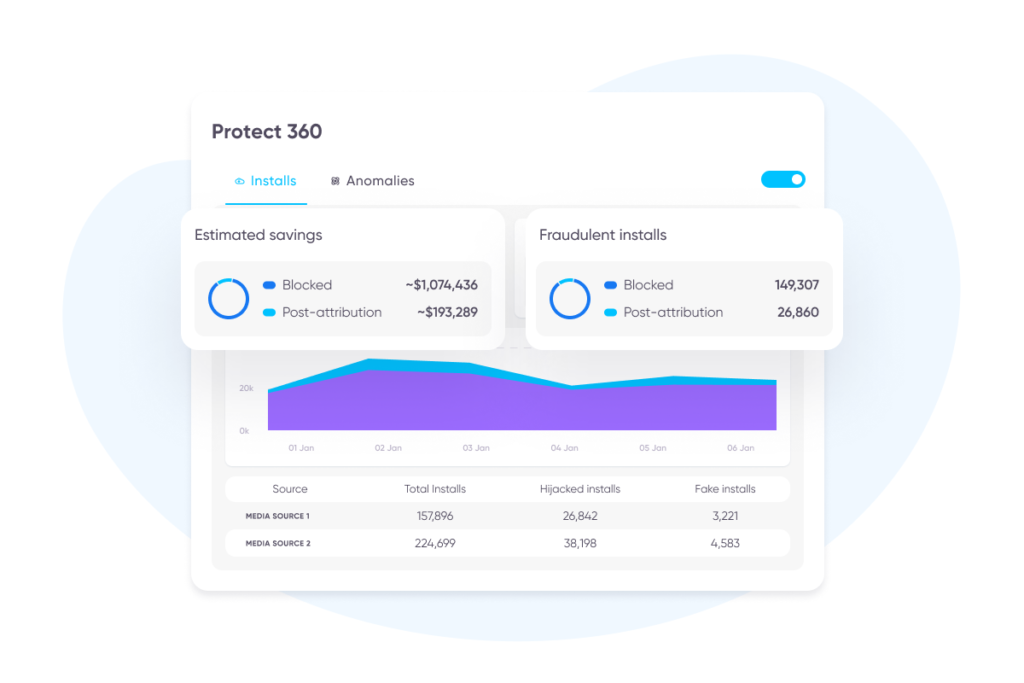
5. Move in the right direction from day one
For both marketers and product managers, time is money. Running marketing campaigns on a large scale means that you would save a lot of time and money if you could shorten the cycle from the moment it takes you to launch a campaign, until you have actionable insights on users’ LTV.
Innovative marketing analytics platforms that use sophisticated machine learning models can predict long-term performance after only one day of a user installing the app. This allows marketers to make faster decisions on how to invest marketing dollars wisely to maximize ROI.
In addition, based on extensive digital product intelligence and predictive analytics models that analyze users’ past behaviors, you can customize your messaging and communications strategy.
That means you will create different in-app messages for different user segments depending on how likely they are to convert to be more relevant than ever to your users.
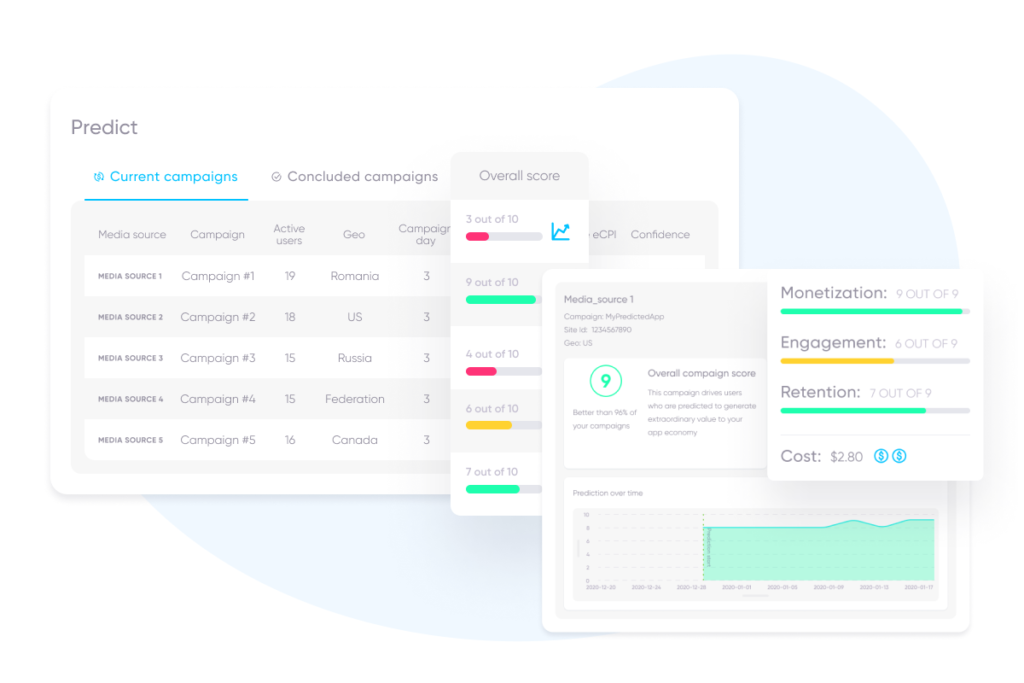
If you want to go from using a flashlight to illuminate one part of a room to turning on the lights, register for our webinar to learn how product analytics and marketing analytics help you innovate your products and marketing campaigns.




